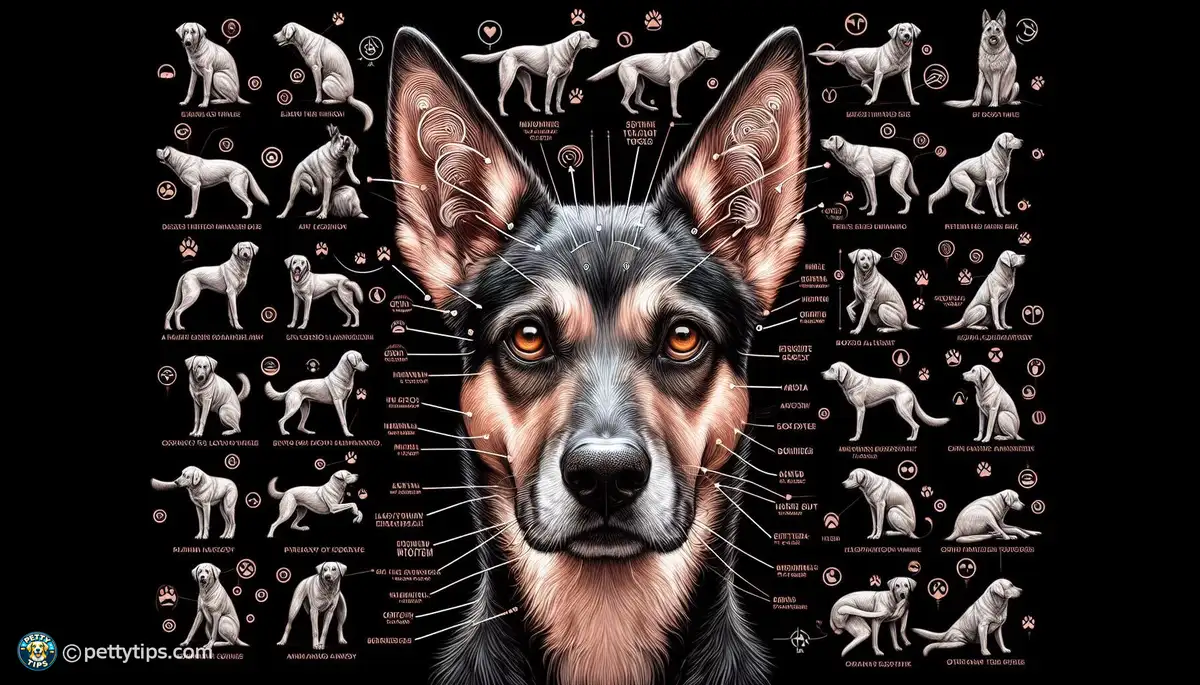
Recognizing Signs of Emergency in Dogs
Jeffrey Oxendine - Aug 25, 2024 - 7 min read


Understanding your dog's body language is essential for effective communication and training. Dogs communicate primarily through body movements, facial expressions, and vocalizations. By interpreting these signals accurately, you can build a stronger bond with your furry friend and address their needs more effectively.
When you can read your dog's body language, you gain insight into their emotions, intentions, and level of comfort in different situations. This understanding enables you to tailor your training approach to suit their individual temperament and personality, leading to more successful outcomes.
Relaxed body posture, soft eyes, and a gently wagging tail are signs that your dog is feeling calm and content. When your dog is in this state, they are more receptive to training and interaction. You may notice them lying on their side with their legs slightly relaxed or sitting with their ears in a neutral position. These signals indicate that your dog feels safe and comfortable in their environment.
A content dog may also exhibit behaviors such as playful barking, rolling over for belly rubs, or bringing you their favorite toy. These actions show that they trust and enjoy being around you, which is crucial for building a strong bond and fostering a positive training experience.
It's essential to recognize the signs of stress and anxiety in your dog to prevent discomfort and potential behavioral issues. Common indicators of stress include tense body posture, dilated pupils, and a tucked tail. Your dog may also pant excessively, drool, or lick their lips when feeling anxious.
Pay attention to subtle cues like yawning, avoiding eye contact, or seeking hiding spots, as these behaviors can signal your dog's discomfort. Additionally, excessive barking, whining, or pacing may indicate that your dog is feeling overwhelmed or stressed in their environment.
Identifying and addressing the root cause of your dog's stress is crucial for their well-being and training progress. Whether it's loud noises, unfamiliar surroundings, or social interactions, understanding your dog's triggers allows you to take proactive measures to alleviate their anxiety.
Create a safe and comfortable environment for your dog by providing a quiet retreat area and avoiding situations that may cause distress. Gradually expose them to trigger stimuli while using positive reinforcement techniques to build confidence and reduce fear. With patience and understanding, you can help your dog overcome their anxieties and thrive in various situations.
During training sessions, observe your dog's body language to gauge their level of engagement and focus. A dog that is attentive and eager to learn will exhibit signs such as pricked ears, direct eye contact, and a relaxed body posture. They may also offer behaviors willingly and respond promptly to commands.
Encourage and reinforce these positive behaviors with praise, treats, or toys to maintain your dog's motivation and enthusiasm for training. By acknowledging their efforts and progress, you reinforce their confidence and strengthen the bond between you and your furry companion.
On the other hand, a distracted or disinterested dog may display signs of boredom or frustration during training sessions. They may yawn frequently, sniff the ground, or exhibit avoidance behaviors such as turning away or wandering off. These signals indicate that your dog is not fully engaged and may need a break or a change in approach.
When you notice these signs, take a step back and reassess the training environment and your methods. Keep sessions short and engaging, vary the activities, and incorporate interactive games to keep your dog mentally stimulated. By adapting to your dog's needs and maintaining a positive training atmosphere, you can keep them focused and motivated to learn.
building trust is fundamental to successful training and a fulfilling relationship with your dog. Trust is established through consistent communication, mutual respect, and understanding of each other's body language. By recognizing and responding to your dog's signals, you demonstrate empathy and build a foundation of trust and cooperation.
Pay attention to your own body language as well, as dogs are highly attuned to human emotions and cues. Maintain a calm and assertive demeanor, use positive reinforcement techniques, and avoid punishment-based methods that can erode trust and damage your relationship with your dog.
As you learn to interpret your dog's body language and respond appropriately, you strengthen the bond between you and your canine companion. Trust and communication form the cornerstone of a harmonious partnership, where both you and your dog feel understood, valued, and supported.
Through consistent training, positive reinforcement, and attentive observation, you can deepen your connection with your dog and achieve remarkable results together. Remember to be patient, empathetic, and responsive to your dog's needs, and you'll embark on a rewarding journey of mutual understanding and growth.